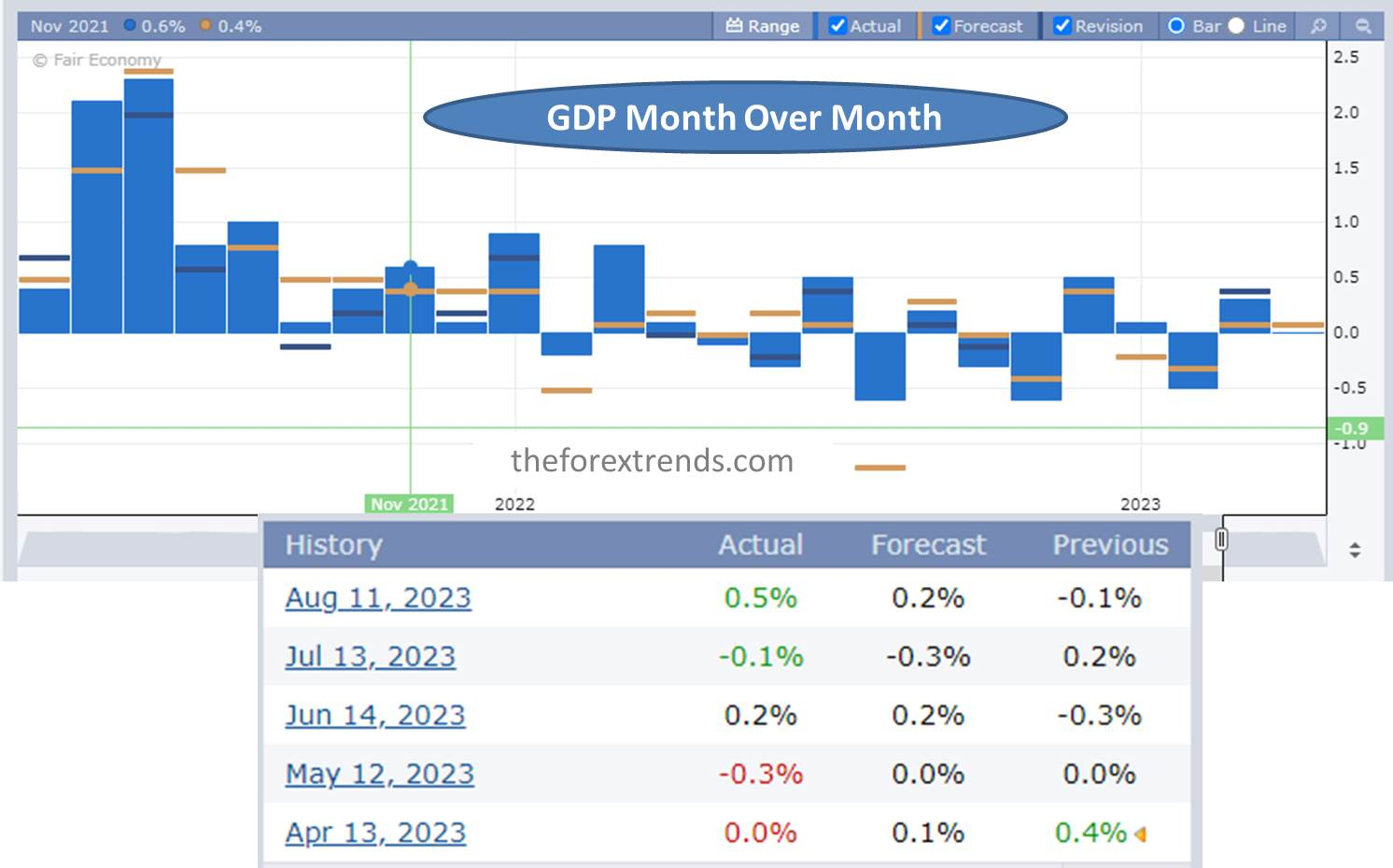
THE FOREX TRENDS
Revealing the World of Forex: Expert Analysis and Secrets of successful trading
In this article, we will discuss the Economic Indicator: Gross Domestic Product (GDP).
Understanding a country's economic health is like checking its vital signs, and Gross Domestic Product (GDP) is the heartbeat of this assessment. It's a measure of all the goods and services produced within a country in a year. Simply put, GDP is the economic pulse.
Remember, GDP focuses on production, not sales. Even if a shiny chair sits in a store's inventory for months without being sold, it still counts toward GDP figures.
Here's the deal: when GDP numbers exceed expectations, it's like a shot of energy for the economy. Positive numbers attract more investment, boosting the country's currency.
Conversely, disappointing GDP figures can hurt. Negative numbers can lead to a drain in capital, which isn't great for the country's currency.
GDP data is released quarterly (except for Canada) and is expressed as a percentage. So when people say the economy grew by 1%, they mean GDP grew by 1%. You can measure GDP using the income approach, but let's focus on the expenditure approach:
C = Consumers spend
I = Investments
G = Government spending
E = Exports
I = Imports
Many ingredients cook up GDP. For instance, consumer spending is a big slice of the GDP pie in countries like the U.S., accounting for over 70%. Investment covers business equipment and home purchases (but not stocks and bonds). Government spending adds to the mix. Net exports, considering international trade, also play a part, with imports subtracted because GDP tracks what's produced domestically.
Now, nominal GDP gives a general picture, but it's not perfect as it doesn't consider inflation. Real GDP, on the other hand, factors in inflation, giving a clearer view of economic growth.
But here's the twist: GDP alone doesn't tell the whole story. Higher GDP can result from rising prices, not more stuff made. Rising prices don't benefit everyday folks, especially if their savings don't keep pace.
A healthy GDP growth rate is about 3-5%, signaling a robust economy. Below-average GDP could signal a recession, while higher-than-expected numbers could hint at inflation.

When the economy booms, central banks may raise interest rates to cool things down. If it slows, they might ease monetary policies to heat things up again. But remember, there are exceptions. If GDP growth comes from booming exports, it can strengthen the currency. But if it's due to stockpiled goods, it can weaken it.
In terms of market impact, GDP isn't a star like Non-Farm Payrolls (NFP). It's reported annually, even though it's calculated quarterly, making it less of a leading indicator. So, don't rely solely on it to predict the future.
Still, GDP matters. Everyone watches it – the market, media, central banks, institutions, and governments. If you want to compare GDP across countries, check out GDP per capita. It's a handy way to gauge economic well-being on a per-person basis.
I hope this article is helpful for you in understanding the Economic Indicator: Gross Domestic Product (GDP)
Stay tuned to our website for more tutorials about Forex Market. If you have any suggestions or queries, feel free to Contact us or drop your message in the comment section below.
Comments